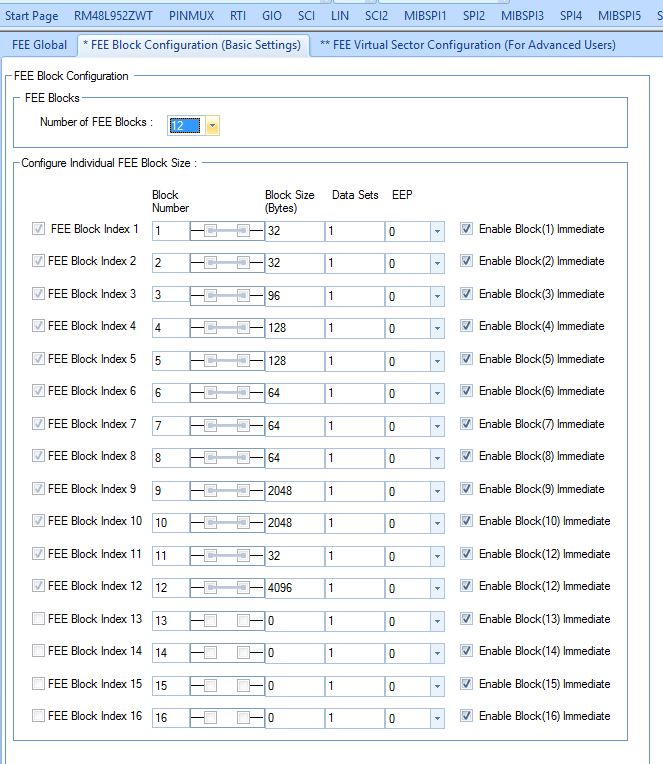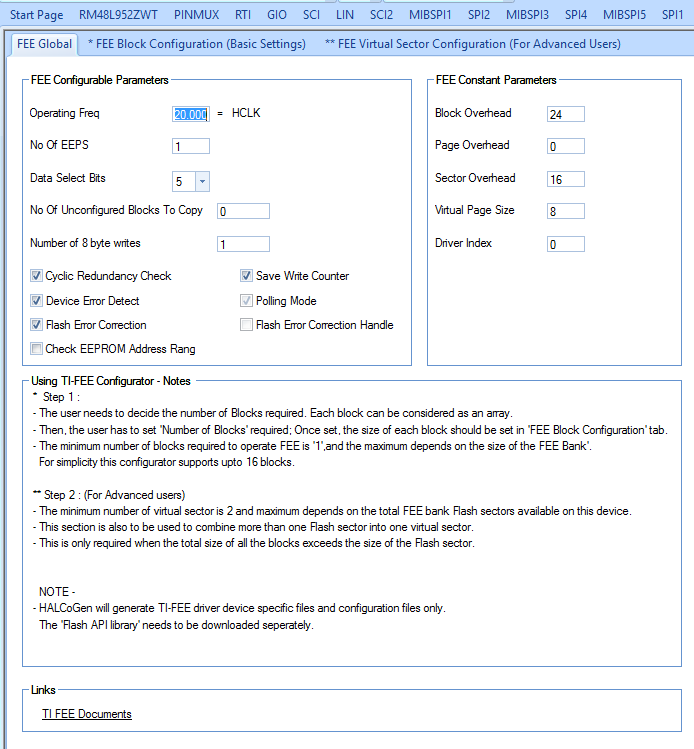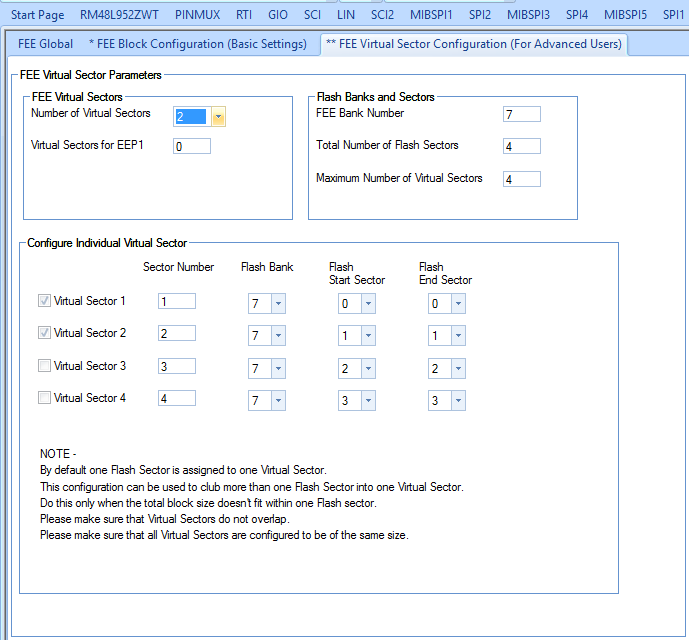I am setting up EEPROM support through Halcogen.
1. What does EEP mean and what do I do with EEP?
2. What does Data Sets mean for each block? Is that the number of structures that I plan to contain in each block or what?
3. Did I understand the setting of size properly? I have 12 items of various sizes that I which to store in EEPROM, 2 different structures. I placed the size of each item as shown.
Here is my basic FEE configuration.
1. What does "No. Of EEPS" mean?
2. What does "Data Select Bits" mean? The tooltip says, "Maximum number of data sets configured per block = 2 ^ Data Select Bits"", which does not help my understanding any.
3. What does "No. of Unconfigured blocks to copy" mean?
4. Ditto of "Number of 8 byte writes"
5. Do I need to conern myself with the other fields: e.g. Polling Mode, Flash Error Correction Handle", etc.
6. How does FEE Constant Parameters affect me and what are they and do I need to change them?
Here are my advanced settings:
Summary:
I need to write 12 C data structures of various sizes shown above to EEPROM.
S1: Do I need to make any changes to what I already have?
S2: What functions do I read each C data structure? Would that be?
TI_Fee_Read(uint16 BlockNumber,uint16 BlockOffset,uint8* DataBufferPtr,uint16 Length)
If so, would the block number just be my C data structure index zero based from 0 to 11?
What in this case would block offset be? I assume 0, as I just have a structure that I read in its entirety. The pouter would be where I go to, and the size would be the actual size to read or sizeof (myStructure1).
S3: Why do I not have to specify the size to write for TI_Fee_WriteSync(uint16 BlockNumber,uint8* DataBufferPtr) and the asynchronous version, but I do in the read?




